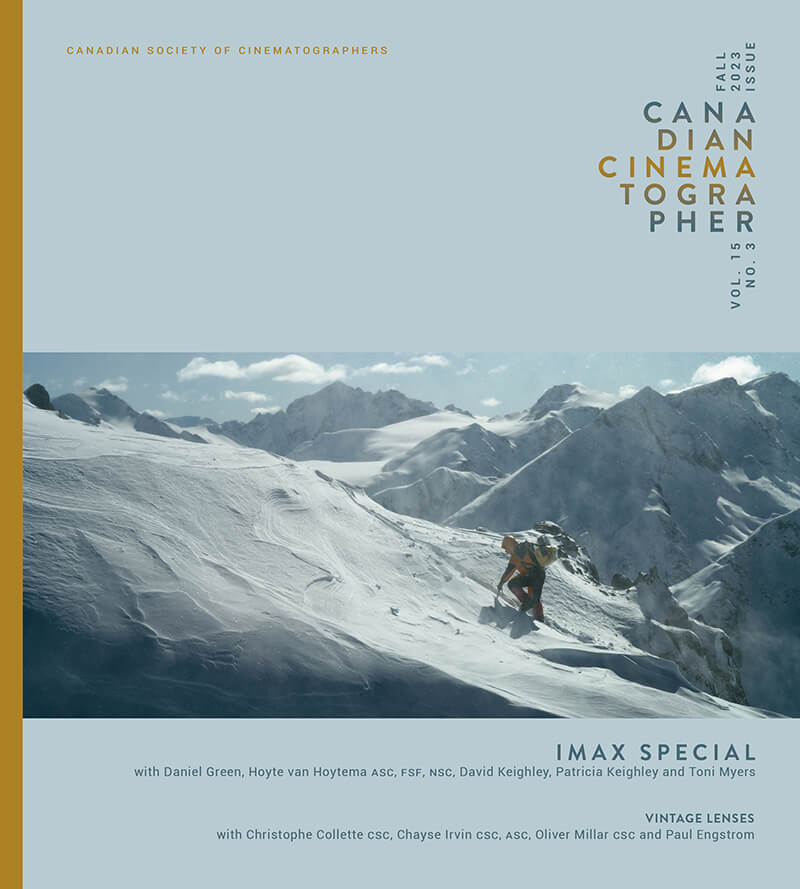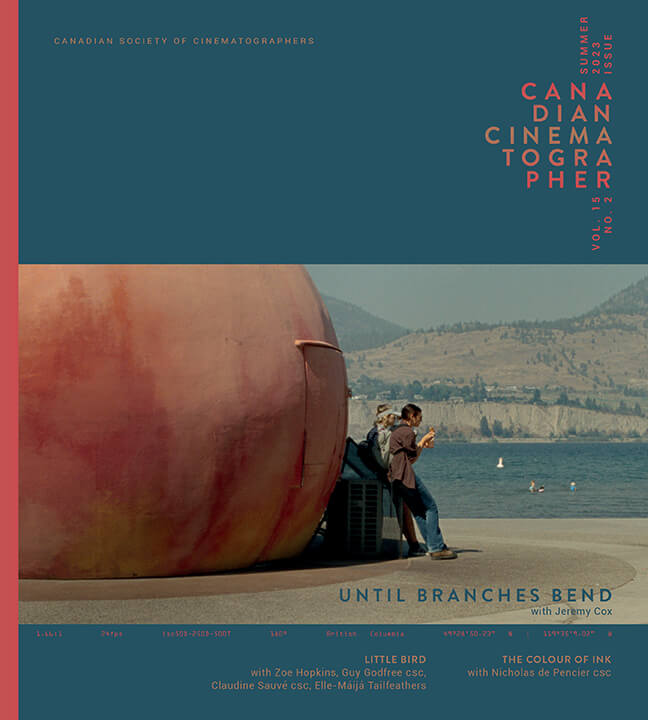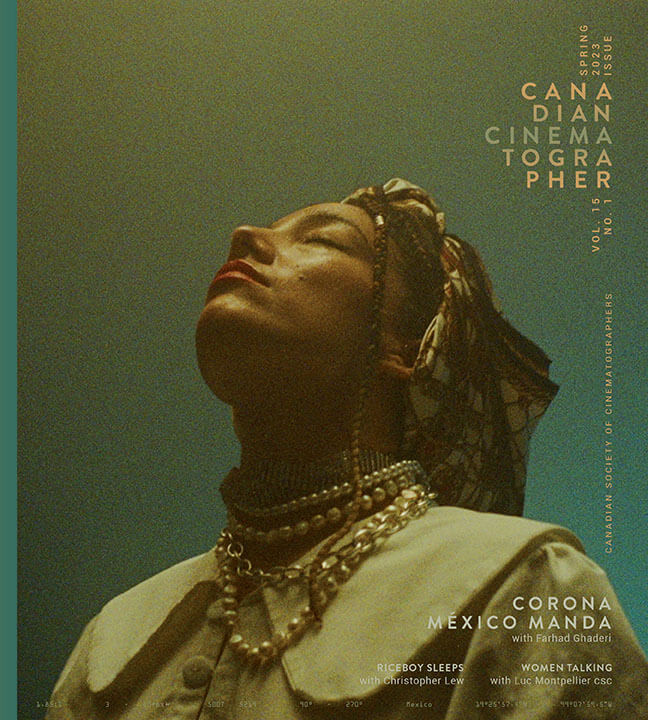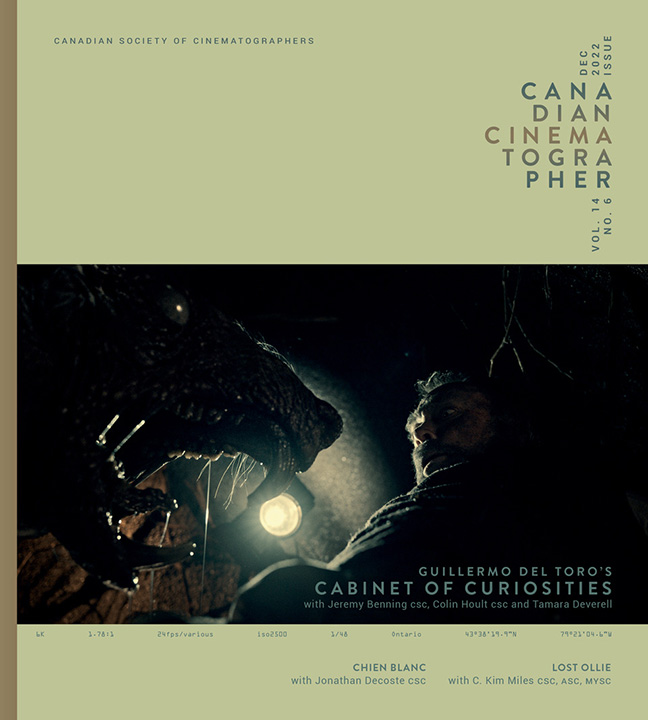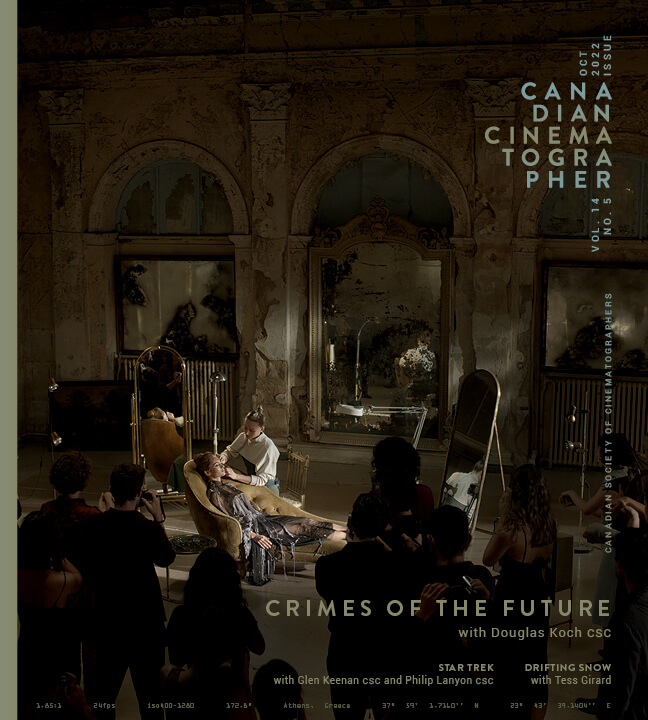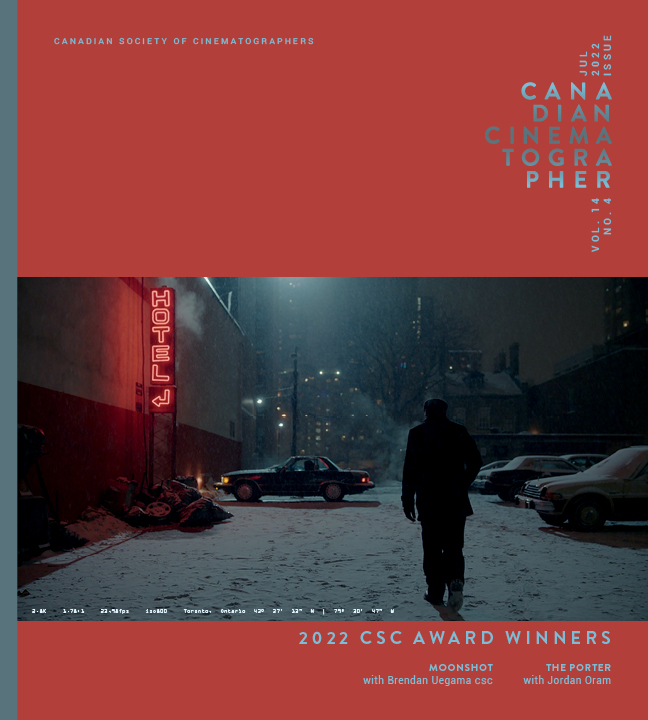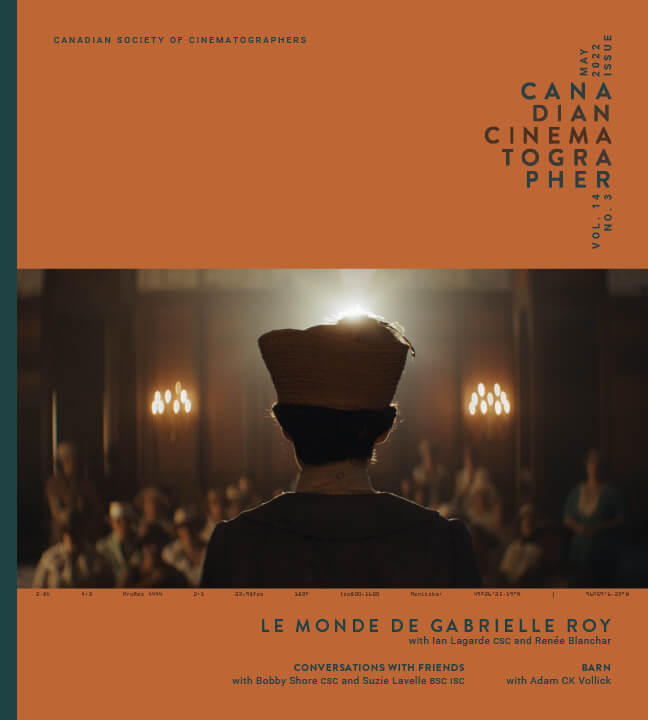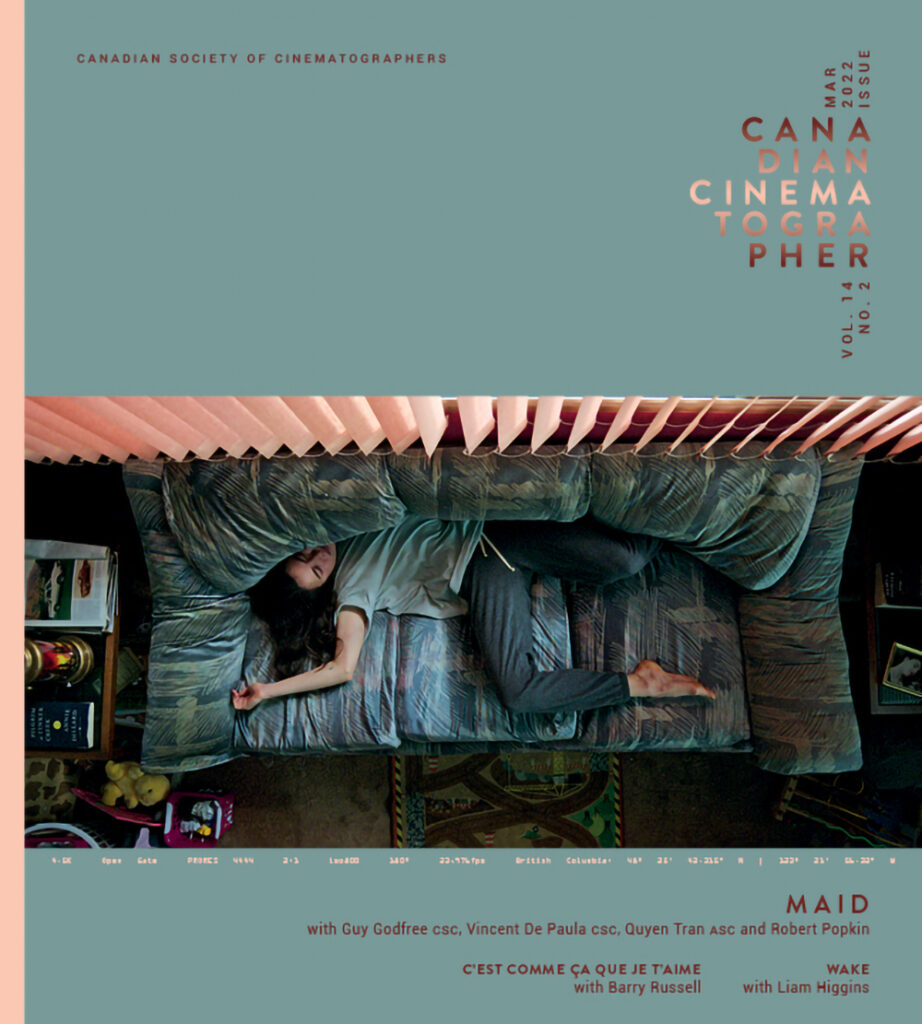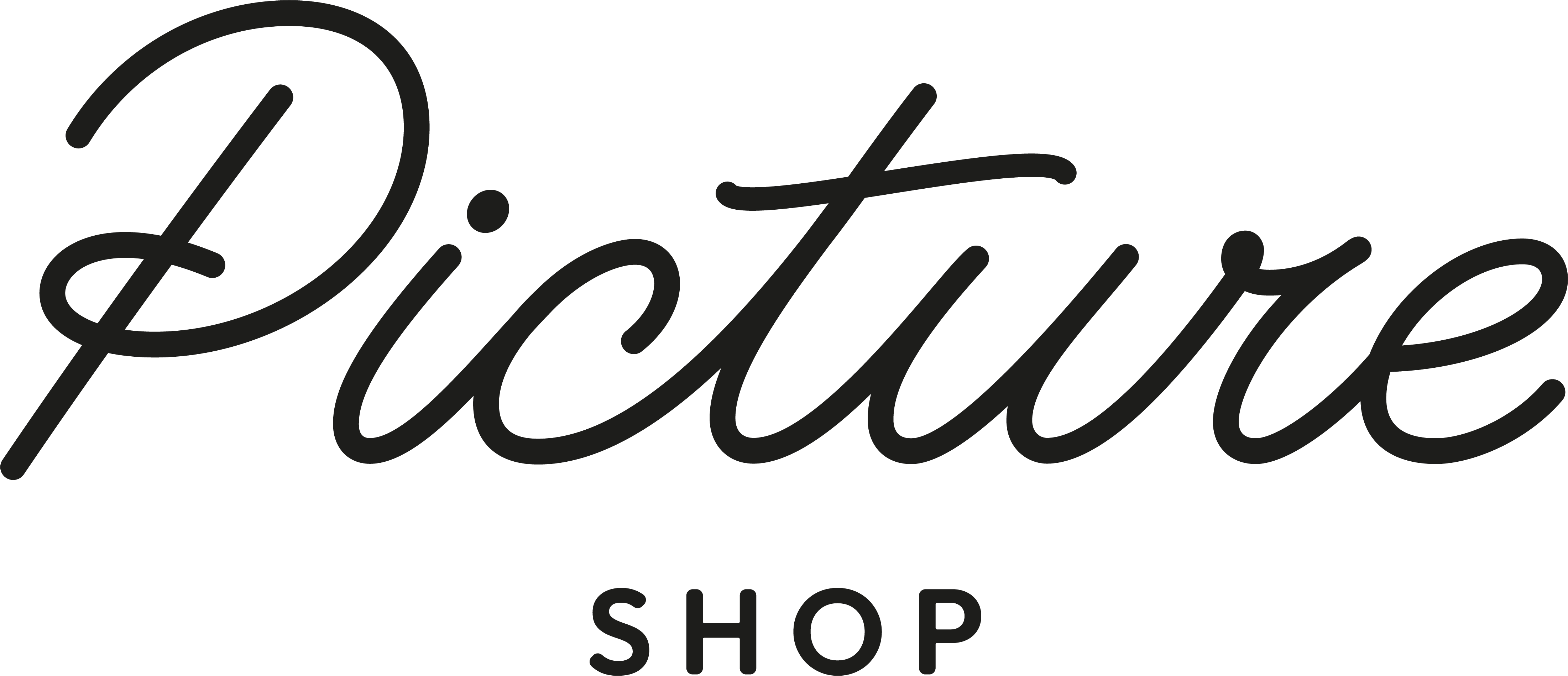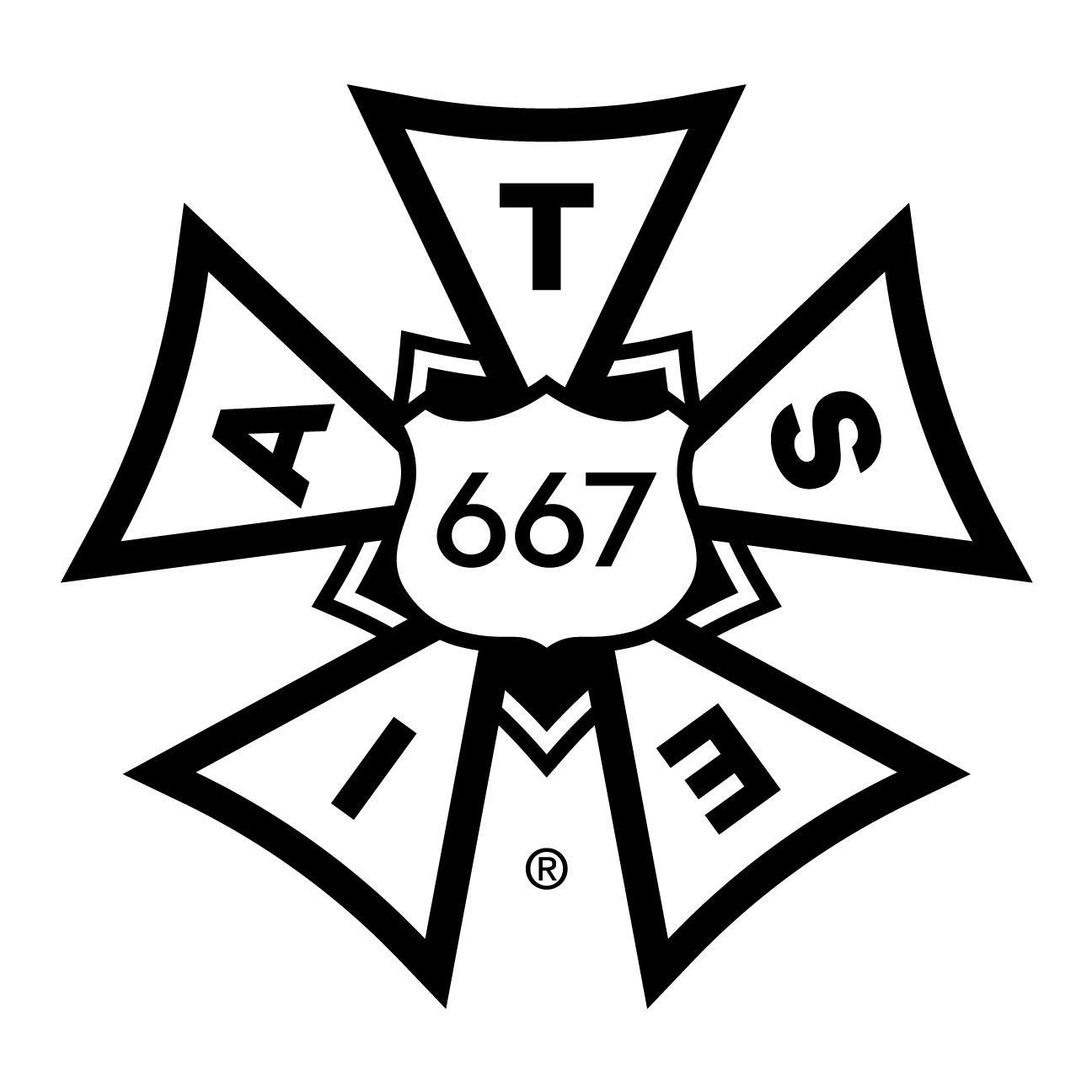
Fostering
Cinematography in Canada Since 1957
The CSC has grown with the country’s film and television industry, and continues to uphold the objectives for which the not-for-profit organization was founded.
2026 AWARDS | CALENDAR | SUBSCRIBE TO OUR NEWSLETTER
Latest News & Events
-
Meet the 2026-2027 Candidates!
Find Out More -
The CSC isn’t powered by magic. It’s powered by you – our members.
Find Out More -
La CSC félicite les membres suivants dont les films ont été sélectionnés pour l’édition 2025 du Festival du Nouveau Cinéma !
Find Out More
Scheduled Workshops
The CSC is committed to improving access to opportunity in the film and television industry as well as professional development in the form of workshops, our internship program and the Field of View Mentorship program.
Follow us on Instagram
#QuanLuong, #AssociateMemberCSC @quanluong_ Tailor Made is a short documentary about Tam Nguyen, a Winnipeg-based tailor who came to Canada as a refugee in the 80s as part of the Vietnamese boat people. Since then he has dedicated his life to helping others, while racking up an impressive client list including Patrick Swayze, Ke Huy Quan, Samuel L. Jackson and many more. I shot this film with just a camera assistant, partly in Vietnamese, over 5 non-consecutive days, capturing wonderful images of Tam in his natural habitat. I remember having to stop him from trying to clean up his work station on the first day of filming because it just looked so good as is. Once I turned off the overhead lights, the place just had a natural colour contrast with the big north facing window and tungsten practicals. I just had to create more direction from the practicals with a light mat and filled in with a small tube in the background and an aputure MC off camera. The film earned a CSC Award nomination, had a great festival run through out North America, with an international premiere at DOC NYC, and won some awards at various film festivals. It was an eye opening journey for me to follow the film along to attend as many film festivals as I could and see how a short doc that I thought was so “local” and personal could affect so many kinds of audience in different ways.

#QuanLuong, #AssociateMemberCSC @quanluong_ My first narrative feature came in 2023 with director Stuart Stone and producer Adam Rodness called “Don’t F**k With Ghosts”. It was a mockumentary style film that had a loose shooting script and combined my love for documentary and scripted filmmaking. It was a 12 day shoot with a week of documentary style filming on real ghost hunts through out Manitoba and a week of fully crewed scripted portion that was informed by what happened in the first week. I shot the documentary style portion with close friends and collaborators Camera Operators Jesse de Rocquigny, Ryan Offenloch and sound mixer Kevin Bacon. We have been together in so many unique situations on other doc shows so we always knew how to collaborate on the fly, getting different shots that complimented each other, staying on the right side of the sun, and giving room for the boom while not getting it in the frame. I knew I wanted to keep the visual approach somewhat consistent and avoid having a drastic change when we move into the second half. We shot in a house that is about to be completely torn down, so we had no power to work with and the freedom to do whatever we wanted. Based on the blocking, I needed to be able to shoot 360 degrees on two levels with long takes and complicated stunt sequences. I was a big fan of the FX shot What We Do In The Shadows and through the CSC, I was able to reach the season 5 DPs Kim Derko CSC and David A Makin CSC, who graciously took the time to share some valuable tips and tricks with me.

#QuanLuong, #AssociateMemberCSC @quanluong_ I work on a lot of documentaries and docu-series, which allows me to travel extensively over the last few years. I’ve always been inspired by docu-series like Parts Unknown, Chef’s Table and Departures. This time last year, I was on my 90th flight of the year, filming the season 5 of APTN’s documentary series Taken. This was an important show that focuses on solving the cases of missing and murdered Indigenous people in Canada, and honouring their stories. It was produced with tremendous care and respect. This show took me across the country to film interviews and b-roll, accompanied by 2 studio weeks, and dramatized re-enactments in Manitoba and Victoria, BC. I had a fantastic time collaborating with show runners Rebecca Gibson and Dinae Robinson on this show to keep it somewhat consistent with the previous 4 seasons shot between 2016-2019 while having the trust and freedom to add more of my sensibilities to this season. I also got to work with many new crew members on different portions of the show and learned so much from everyone.

#QuanLuong, #AssociateMemberCSC @quanluong_ During early COVID, I made a short film called “Container” that I shot and co-wrote, co-directed and produced with my late friend Erin Hembrador. It was the first time that I had taken part in putting a film together from scratch and it was the first time that I’ve ever got a grant for a project. The film was inspired by a tragic event that happened in 2019 where a group of Vietnamese nationals were found in a container in Essex, in a human trafficking line. Erin and I wanted to make a film about the sacrifice and motivation of those who choose to leave their family behind, which I deeply resonated with. Since we couldn’t leave the house, we spent countless hours prepping, story boarding everything, watching films for inspiration, shot listing every shot. The whole film was set in a container so we rented the biggest U Haul I could drive, parked it in a studio and dressed it. The production designer, Jordan built a ceiling in the truck and my gaffer Nate ran cables and installed practicals that can fit Aputure B7C bulbs in them. Since I wanted to have a heightened realism approach to it, I didn’t want to shoot with any light stands on the ground. Most of the film was lit with the practicals with some close ups having a aputure MC bounced into a styrofoam on a baby C-stand and the “night” scenes having a silk having underneath the practicals for the soft top light look. Since I was co-directing in Vietnamese while speaking English to most of the crew, I hired my good friend and mentor Markus Henkel to operate that camera. It was a fantastic opportunity to learn how to communicate with so many people at once in two languages, and I hope I’ll get to do it again soon.

#QuanLuong, #AssociateMemberCSC @quanluong_ Over the years, I’ve built my career through personal projects. From short narrative films, short documentaries to feature documentaries and docu-series, I’ve created opportunities for myself by learning how to write pitches, get grants, tell stories, then hire myself as the DP to experiment and build my reel. Short docs though, has always held an important place in my heart. I think it’s the perfect medium to tell unique stories on whatever budget you have and experiment with cinematography. I got to make numerous short documentaries with CBC Manitoba in the last 6 years, which was a fantastic way to learn filmmaking. The last one I made for CBC was a 5 minute film called “I Hurt Myself”, which earned me my first CSC Award nomination. It was shot and directed by only myself, and edited by my wife @nmaccaroni. I’ve continued making short documentaries after that with bigger budgets. My last two short documentaries include “Becoming Ruby”, which premiered at Hot Docs this year and “Tailor Made” had its international premiere at DOC NYC and got me another CSC Award nomination. These films are usually made with just myself and the subjects, with a modest equipment list that I can manage without a crew. This kind of filmmaking comes with a lot of freedom while satisfying a totally different part of my brain compared to leading a crew and working with a director. Hopefully I can keep making these little films on the side to tell stories that I really want to tell.

#QuanLuong, #AssociateMemberCSC @quanluong_ Hey there, I’m Quan, a Vietnamese Canadian DP based in Winnipeg, MB and associate member of the CSC. I moved to Canada almost 10 years ago as an engineering student after a fortune teller told my mom that I would either be fixing cars, teaching or working in film behind the camera. Even though the engineering pathway ended after 3 months, I was able to change major to film studies and started pursuing a career in film, as per the prophecy. I didn’t grow up watching movies and knew I had to catch up so the day I switched major, I put on the only “art” film I knew, The Godfather. A few weeks later, I saw La La Land and knew I wanted to be a cinematographer, perhaps it was how the film made me feel, having had just left a high school relationship behind to move across the world. While going to university, I started out working at a small corporate production company, and shooting music videos on the side. Then in my 3rd year, I started working at @farpointfilms as a colourist, and slowly made my way on to their sets as an AC, Lighting Technician, camera operator, and eventually DP before becoming a freelancer. Over the last decade, I’ve been able to grow my film career by learning from local mentors like @mrkshenkel and @bradfilm, as well as through the CSC mentorship program with @mayabankovic @guygodfree and @matjbarkley . Thank you Carolyn for this great honour to host as I’ve been part of the CSC as a student member, affiliate member, now associate member and hopefully full member one day. This community has truly expanded my horizons and has changed my career in many ways.

#AliceStephens #AssociateMemberCSC @filmbyalice
My time here is coming to an end, so I wanted to share two projects that have meant a great deal to me this year that are both in post-production.
In March, I spent two weeks in Kenya filming with the Samburu, an ancient tribe who live on and with the land. They are nomadic pastoralists who move with the weather, guided by long-standing rituals that shape their instincts and their collective rhythm. I was there to document everyday moments, ceremonies, and the stories shared by elders. We were there as part of an ongoing project to safeguard Indigenous knowledge.
We camped deep in the bush: bathing with a bucket of fire-warmed water, charging batteries and offloading footage twice a day in the short window when the generator came to life.
In August, I had the incredible opportunity to travel north to Pond Inlet, Nunavut, for another project with a similar purpose. Working with Tanya Tagaq @tanyatagaq and Chelsea McMullan @chelsea.mcmullan, we shot on 16mm as Tanya and her family returned to a remote island (Aulitivik) they had been relocated from in the 1950s. Again, we found ourselves camping on sacred ground, capturing memories, performances, and the quiet continuity of daily tradition.
Both the Samburu and the Inuit share an innate stillness and grounded presence that comes from knowing the land and working with it not against it.
It’s funny that these two projects unfolded in the same year. After moving to Canada, I hadn’t shot much documentary work, so I started reconnecting with people in the field and sharing my interest again. I truly believe that when you focus on what you want, that energy finds its way and eventually comes back to you. This year has been a highlight of my career due to these two extraordinary experiences.

#AliceStephens #AssociateMemberCSC @filmbyalice
Lifeline by @neighbourhoodwatchtoronto
A very moving experience to have the opportunity to get to know and capture a number of members of the St Jacobs and Elmira Mennonite community. The process of making the music video was reflected in the way they live. An emphasis on community, a slower rhythm of life and a simplicity in their lifestyle and everyday experience.
Charlie came to me with an enthusiasm and a curiosity to explore the meaning of this song through observing the everyday life and rituals of a Mennonite community. I was onboard immediately. What drove Charlie, Julian, Katie, and me was the opportunity to learn about a way of life that felt distant from our hyper connected way of life. I was excited to be part of a team genuinely committed to understanding, and to finding a visual language that was both respectful and thoughtful.
Thank you to the talented and wonderfully minded @charliehghill for directing and dedicating so much love and energy. And producers @running_in_stilettos_ and @juliuswieler for your effortless curiosity and generosity to make this happen in such a small amount of time.
Edited by @lukaswengorz
Colour grade @abewynen @redlabto
Titles @bec.kid
Special thanks to @grande_camera @opcproduction

